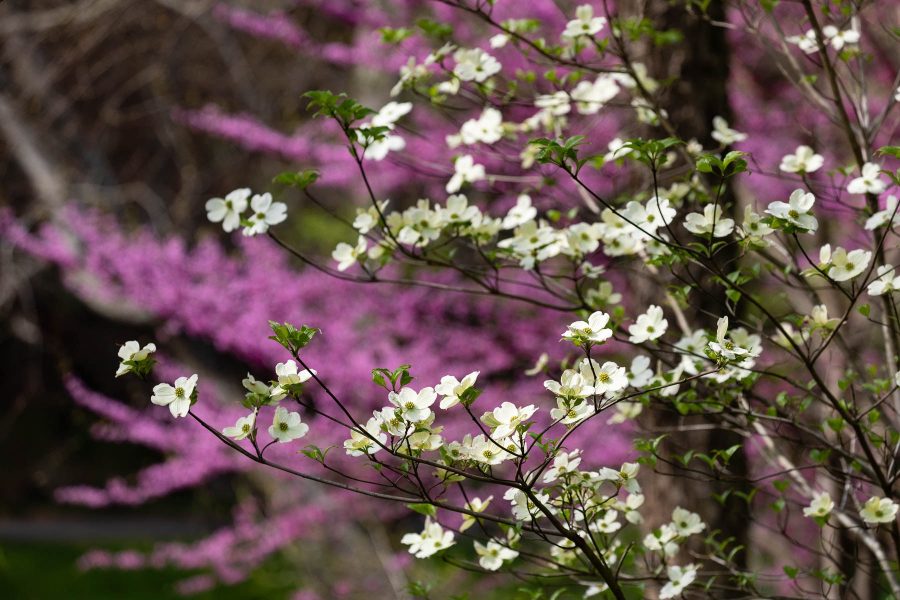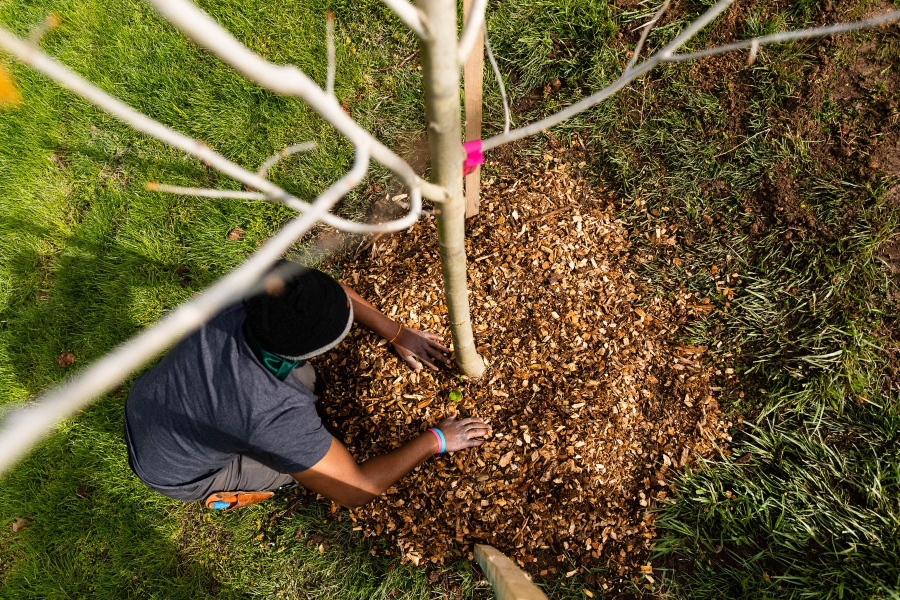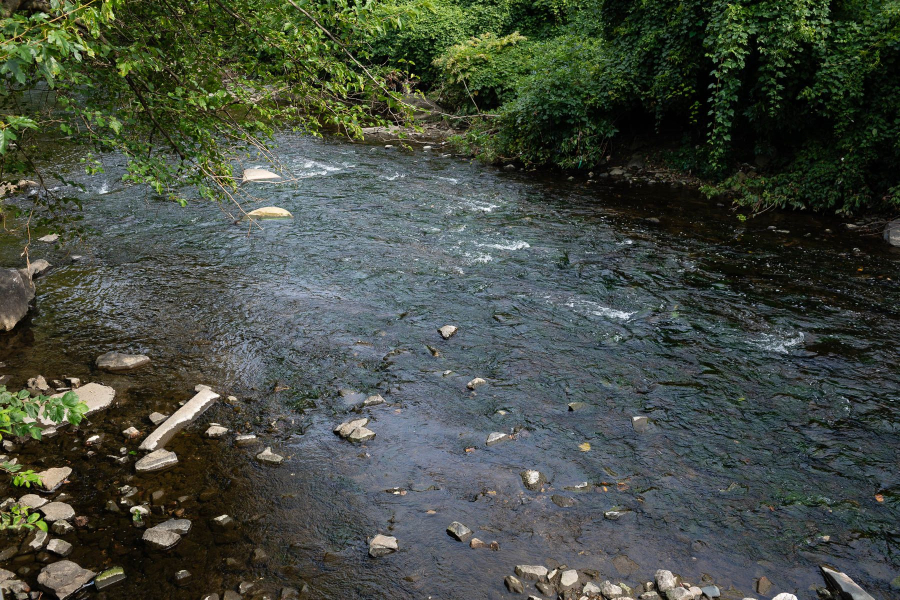Memorial trees give us a way to honor loved ones while protecting the Bay
The watershed is home to numerous memorial and commemorative trees

The eight trees planted in West Baltimore’s Lafayette Park on Mother’s Day were no regular plantings. The species were common—four dogwoods and four southern magnolias, native trees known for their showy white flowers—but for those who attended the planting ceremony, each tree represented a loved one tragically lost to gun violence.
The neighborhood’s “memorial grove” is a dual-effort between the Baltimore Tree Trust and the Baltimore Peace Movement, funded by a National Park Service Chesapeake Gateways Grant. A total of 28 trees are set to be planted in Lafayette and Druid Hill Park, all of which will memorialize residents who died from gun violence. Art installations and commemorative stories about the victims will be used to engage the community and spread a message of peace and healing.
In an email newsletter, the Baltimore Tree Trust wrote, "These trees serve as representative of each individual legacy, and their ability to live on beyond their attachment to this physical world. They are here to be visited, protected, cared for, and remembered."
Memorial or commemorative tree plantings such as the one in West Baltimore have been occurring for generations. As a natural symbol for the various stages of life, trees have been used to memorialize the deceased, commemorate the newly born or honor friendships, events and community leaders.

In the Chesapeake Bay watershed, you can find memorial tree plantings on all sorts of scale.
On the grounds of the White House, a little over a mile from the Potomac River, are a number of commemorative trees that U.S. presidents and First Ladies have been planting since the 1870’s. The most recent tree, a Yoshino cherry, was planted by Jill Biden to symbolize decades of friendship between the United States and Japan. In 1935, Eleanor Roosevelt planted a white oak to celebrate the 300th anniversary of the founding of Connecticut. When one tree dies off, it’s typically replaced by another administration, honoring friends, nations and institutions across the country.
Also in Washington, D.C., the grounds of Arlington National Cemetery is home to 142 memorial trees that commemorate military units and battles, veterans, families and others who serve. Thirty-six of these trees are dedicated to Medal of Honor recipients such as Martin Luther King, Harriet Beecher Stowe and Abraham Lincoln. A mix of oak, ash and other hardy native trees are selected for each of the honorees.
University arboretums are another popular place in the Bay watershed for memorial trees. Penn State has a memorial tree program in which people can sponsor a tree in honor of a loved one, with the proceeds going to the Endowment for the Arboretum at Penn State. According to Patrick Williams, the arboretum’s director of development, 176 trees have been planted since 2009. Most of these trees are in memory of a deceased loved one, but Williams has seen trees gifted for birthdays, retirements and other special occasions.

A similar program can be found at the University of Virginia arboretum. When purchasing a memorial tree at this university, friends and family are invited to attend a planting ceremony and help position the tree in the ground, cover its roots with soil and mulch and water it. According to the arboretum’s website, over 60 trees have been planted in honor of a loved one, including one dog.
On a national scale, there are a handful of reputable organizations that can coordinate a memorial tree planting. The Arbor Day Foundation has a program for planting 30, 50 or 120 trees, which they consider a Commemorative Forest. American Forests has a similar program in which 75 trees can be planted as a gift for someone, which comes with an email and personalized certificate.
Beyond their ability to commemorate loved ones and special events, trees are also an amazing benefit to the Bay. Trees soak up stormwater runoff, provide cooler water for fish, store carbon from the atmosphere and provide habitat to a variety of wildlife. They also help keep communities cool during the summer and improve our mental health.
If you’re interested in planting a memorial tree yourself on our own property, you could consider reaching out to an environmental group near you or a city and county agency to learn about tree planting programs. When selecting a tree, just make sure to follow the “right tree, right place” rule and pick a species that is native to your area and will do well given the amount of shade, sunlight and water it is likely to receive. Given the significance of the tree you want to use a species that has the best chance of thriving!

Comments
There are no comments.
Thank you!
Your comment has been received. Before it can be published, the comment will be reviewed by our team to ensure it adheres with our rules of engagement.
Back to recent stories